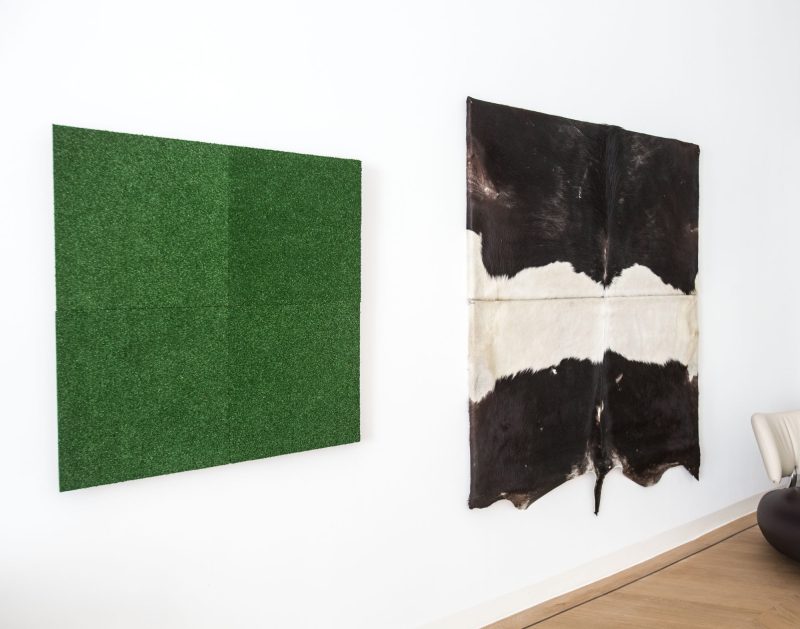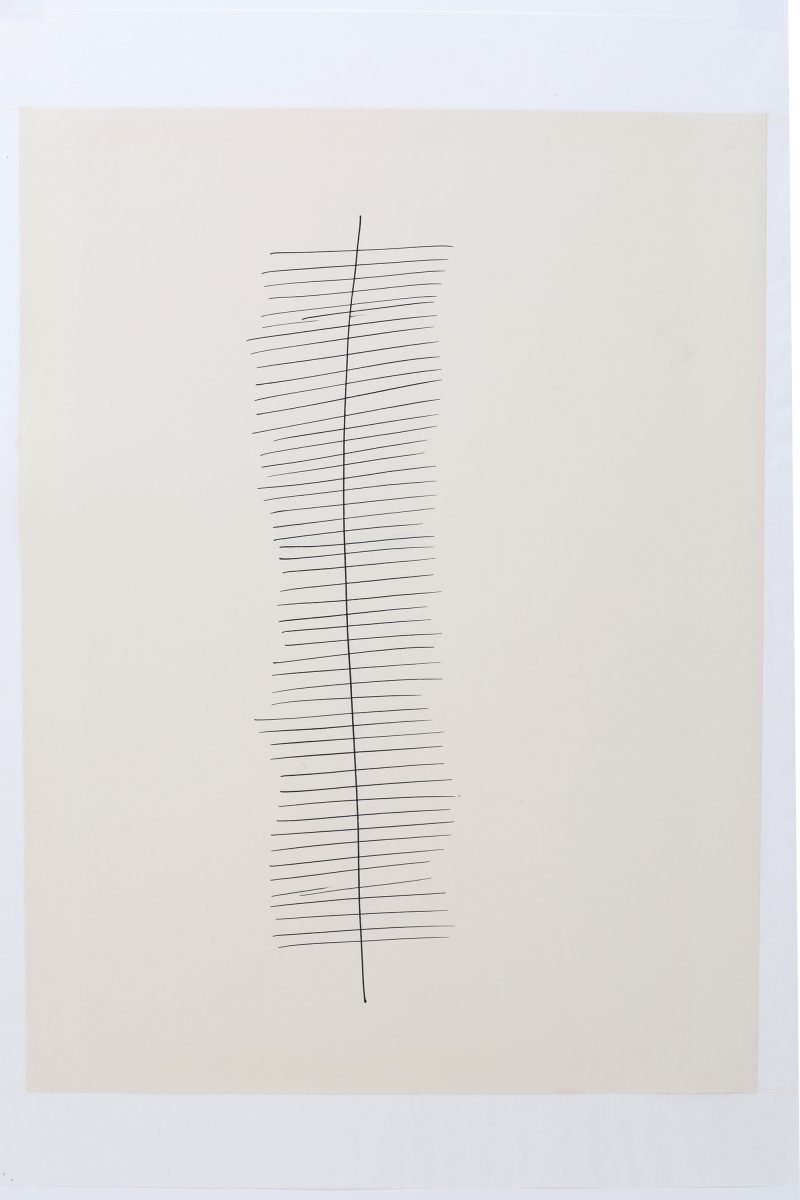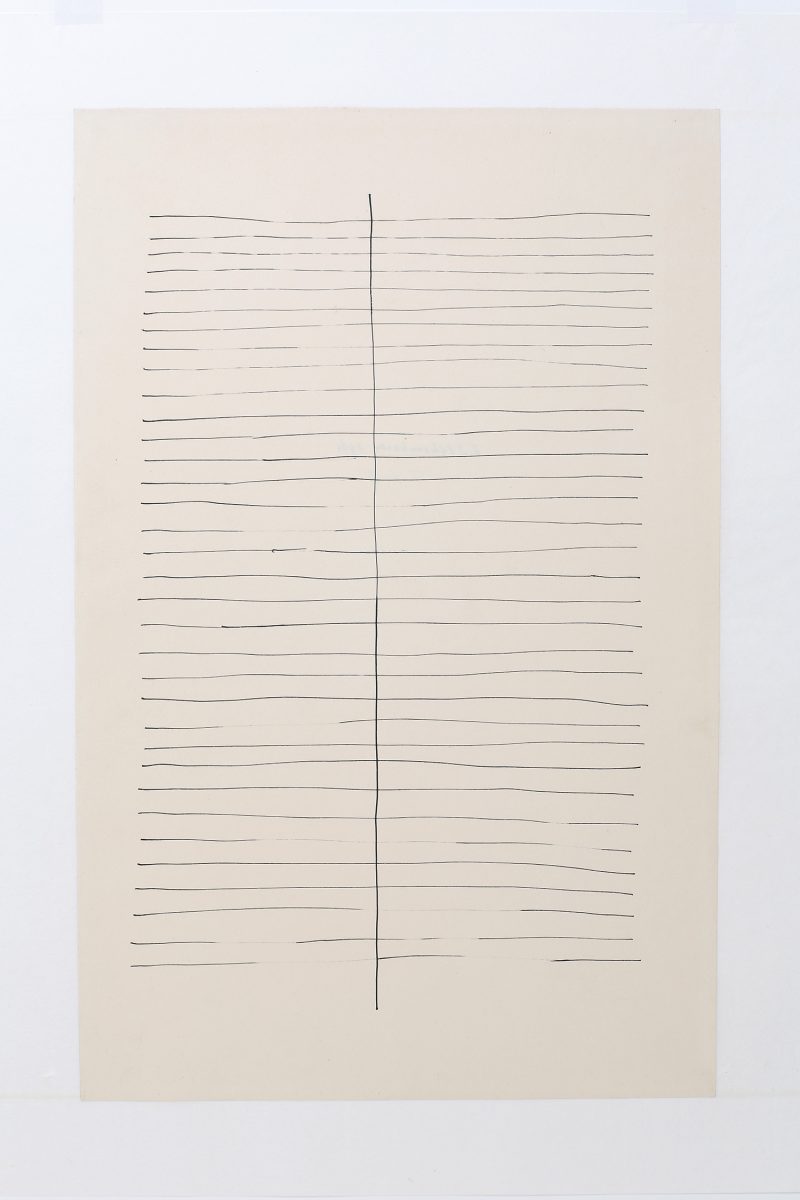JAN SCHOONHOVEN & HENK PEETERS
21 of the Most Beautiful Drawings
7 Mar – 18 May 2014
TMH is extremely pleased to present an exhibition that showcases a selection of 21 drawings of JAN SCHOONHOVEN from the private collection of HENK PEETERS. Both artists were prominent members of the Dutch NUL-group. Besides drawings by Schoonhoven, the exhibition includes works of Peeters and other related artists.
Peeters acquired the first drawings from Schoonhoven to raise badly needed cash for the first NUL-exhibition at the Stedelijk Museum in 1962, and continued collecting them all his life. Peeters had kept his, as he called, “21 most beautiful drawings,” which all date from the period between 1962 and 1985, together as a group. In 2005 Peeters sold these drawings to the American foundation ICAR (Institute for the Cooperation of Art and Research) founded in 2000 by Marsha Plotnitsky in order to stimulate research and distribution in the field of art and science.
PUBLICATION
TMH Catalogue 1.2, 2014
SCREENING
Man with a Movie Camera (1929) dir. Dziga Vertov, 23 May 2014
Download Press Release
Schoonhoven and Peeters, together with Armando, Jan Hendrikse, and herman de vries, were founders of the Dutch group NUL in the 1960s. The group, which played an important role in the international movement, postulated “objective art,” i.e. art that, through the use of minimal (and abstract) techniques and materials—like a few strokes of a pencil or burn marks on a sheet of paper or piece of fabric—should be free of any emotional value.
Schoonhoven was the only member of the Dutch NUL-group who was internationally successful; today he is considered one of the most influential ZERO-artists, together with Piero Manzoni, Lucio Fontana, Enrico Castellani, Günther Uecker, Otto Piene, Heinz Mack, Yves Klein, and Arman. Surprisingly enough, it was 1999 already when Schoonhoven had his first solo exhibition in the United States, which explains why a young American foundation like ICAR could buy his drawings without any competition as late as 2005.
This exhibition at TMH not only showcases the work of Schoonhoven and Peeters in their own right but also the trials and tribulations of buying and collecting art.
JAN SCHOONHOVEN
BIOGRAPHIES
Jan Schoonhoven (1914-1994) was born in Delft and studied at the Academy in The Hague. From 1945 until his retirement in 1979, he was employed as a civil servant at the postal, telephone and telegraph services in The Hague. Schoonhoven lived most of his life in Delft, where until the death of his wife Anita in 1978, he participated in the rich social life around her passion—jazz. From his first solo show of 1957, Schoonhoven’s works—both his serial reliefs in white papier-mâché, wood, or cardboard and minimalistic drawings—have acquired an iconic status as representative of ZERO art. Schoonhoven was awarded Second Prize at the 1967 São Paulo Biennial and has been featured in Documenta and many major museums worldwide. Schoonhoven shared the aspirations of ZERO but saw his works as autonomous and free from outside influence.
Henk Peeters (1924-2013) was born in The Hague and studied at The Hague Academy. From 1957 until 1972 he taught at the Art Academy in Arnhem. Peeters lived in Hall, eastern Netherlands, with his wife Truus. He exhibited widely from 1958 onwards in museums and galleries, both in the Netherlands and internationally. Peeters is best known for in his monochrome assemblages with gauze, feathers, and cotton balls. He was a passionate Dutch ZERO-ist and popularizer of its ideas through theoretical exchange, curating (including the 1962 ZERO/Nul exhibition at the Stedelijk Museum, Amsterdam), and collecting. In the Sotheby’s catalogue of his collection, Peeters is quoted as saying that he didn’t want to occupy himself with forms and colors and sought something realistic and immaterial.




































